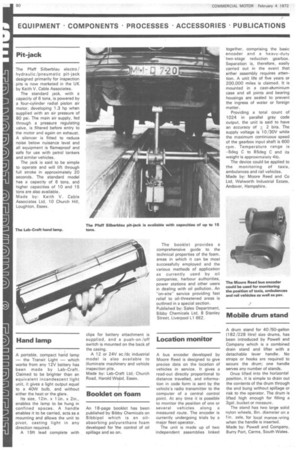Location monitor
Page 94

If you've noticed an error in this article please click here to report it so we can fix it.
A bus encoder developed by Moore Reed is designed to give precise data on the location of vehicles in service. It gives a read-out directly proportional to distance travelled, and information in code form is sent by the vehicle's radio transmitter to the computer of a central control point. At any time it is possible to monitor the position of one or several vehicles along a measured route. The encoder is currently undergoing trials by a major fleet operator.
The unit is made up of two independent assemblies linked together, comprising the basic encoder and a heavy-duty two-stage reduction gearbox. Separation is, therefore, easily carried out in the event that either assembly requires attention. A unit life of five years or 200,000 miles is claimed. It is mounted in a cast-aluminium case and all joints and bearing housings are sealed to prevent the ingress of water or foreign matter.
Providing a total count of 1024 in parallel gray code output, the unit is said to have an accuracy of ± 2 bits. The supply voltage is 10/30V while the maximum continuous speed of the gearbox input shaft is 600 rpm. Temperature range is —5deg C to 85deg C and its weight is approximately 41b.
The device could be applied to the monitoring of taxis, ambulances and rail vehicles. Made by: Moore Reed and Co Ltd., Walworth Industrial Estate, Andover, Hampshire.














































































































































